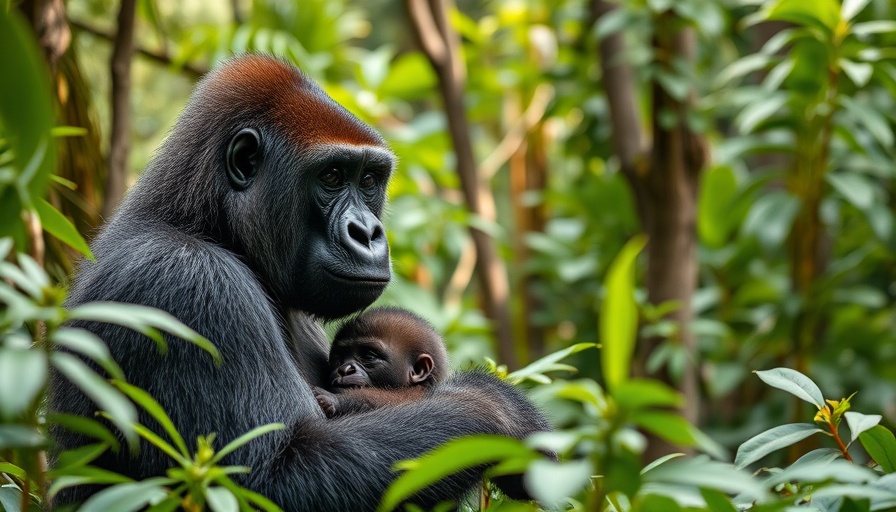
Protecting Nature: DRC's Oil and Gas Controversy
The Democratic Republic of the Congo (DRC) is facing a significant and troubling decision; more than half of its land is now open for oil and gas drilling bids, which could devastate its renowned biodiversity and pristine forests. A staggering 306 million acres, including habitats critical to endangered species like the mountain gorilla, are now at risk. This decision poses not only an environmental crisis but also impacts the lives of nearly 39 million Congolese who depend on these forests for survival.
The DRC: An Ecological Treasure
The DRC is home to the world’s second-largest tropical rainforest, making it a globally significant ecological wonder. This lush environment supports a variety of wildlife, including elephants, rare birds, and great apes. The forests serve as carbon sinks, particularly the Cuvette Centrale peatlands, which hold about 30 gigatons of carbon—vital in combating climate change.
According to a new report by Earth Insight, the ecological significance of these forests cannot be overstated. They are not merely a habitat but are instrumental in supporting local cultural identities and livelihoods. Yet, ironically, the same government championing conservation initiatives, like the Kivu-Kinshasa ecological corridor, now seeks to jeopardize these efforts by auctioning off land for oil extraction.
Community Concerns and Voices
The local communities, particularly Indigenous populations, are raising alarm bells. Pascal Mirindi, a notable campaign coordinator, highlights a paradox: “39 million Congolese people could be directly affected.” The inconsistency between promoting ecological corridors while inviting destructive oil drilling has not gone unnoticed.
“We will not remain silent while certain people organize themselves to sell off our future,” Mirindi emphasizes. This sense of urgency underscores a broader call for environmental justice, where the voices of local residents are central in conservation discussions.
What’s at Stake: Biodiversity Under Threat
The most alarming detail from the report is that the oil blocks overlap with protected areas and key biodiversity areas, including 20.5 million acres of designated conservation land. This overlap not only threatens unique wildlife habitats but potentially undermines broader climate initiatives aimed at sustainability and biodiversity protection.
A huge portion of the recently established Kivu-Kinshasa Green Corridor also intersects with these oil blocks. If drilling commences, it could compromise the ecological integrity of these conservation areas, raising doubts about their viability as long-term climate solutions.
The Ripple Effects on Climate Change and Global Health
The implications of oil drilling extend beyond the DRC's borders. The forests of the DRC play a crucial role in regulating the global climate. The vegetation absorbs carbon dioxide and mitigates climate change effects, essential for health and wellness on a global scale. Losing these forests diminishes the capacity to combat climate change, which could lead to increased health issues worldwide.
By supporting ecological vibrancy in places like the DRC, we not only protect the local wildlife but can also ensure cleaner air, safer climates, and healthier living environments globally. This connection between local ecological health and global wellness is often overlooked yet crucial for holistic health perspectives.
Taking Action: What Can You Do?
For those passionate about conservation, there are tangible steps to take. Supporting organizations that promote sustainable practices and advocating for the local communities facing displacement is crucial. Engaging with policymakers to emphasize the importance of preserving natural habitats can lead to more responsible decisions about land use.
At an individual level, making conscious lifestyle choices that prioritize sustainability can cumulatively make a difference. Whether it’s reducing plastic use, supporting eco-friendly products, or just staying informed on global environmental issues, every small action contributes to a larger movement.
As the DRC faces this critical juncture, it becomes imperative for those of us who care about the planet to engage thoughtfully with these challenges. While we cannot always be there in person, our voices and actions can resonate far beyond our immediate environments. It’s time to act—what kind of future do you want to help create?
 Add Row
Add Row  Add
Add 




Write A Comment